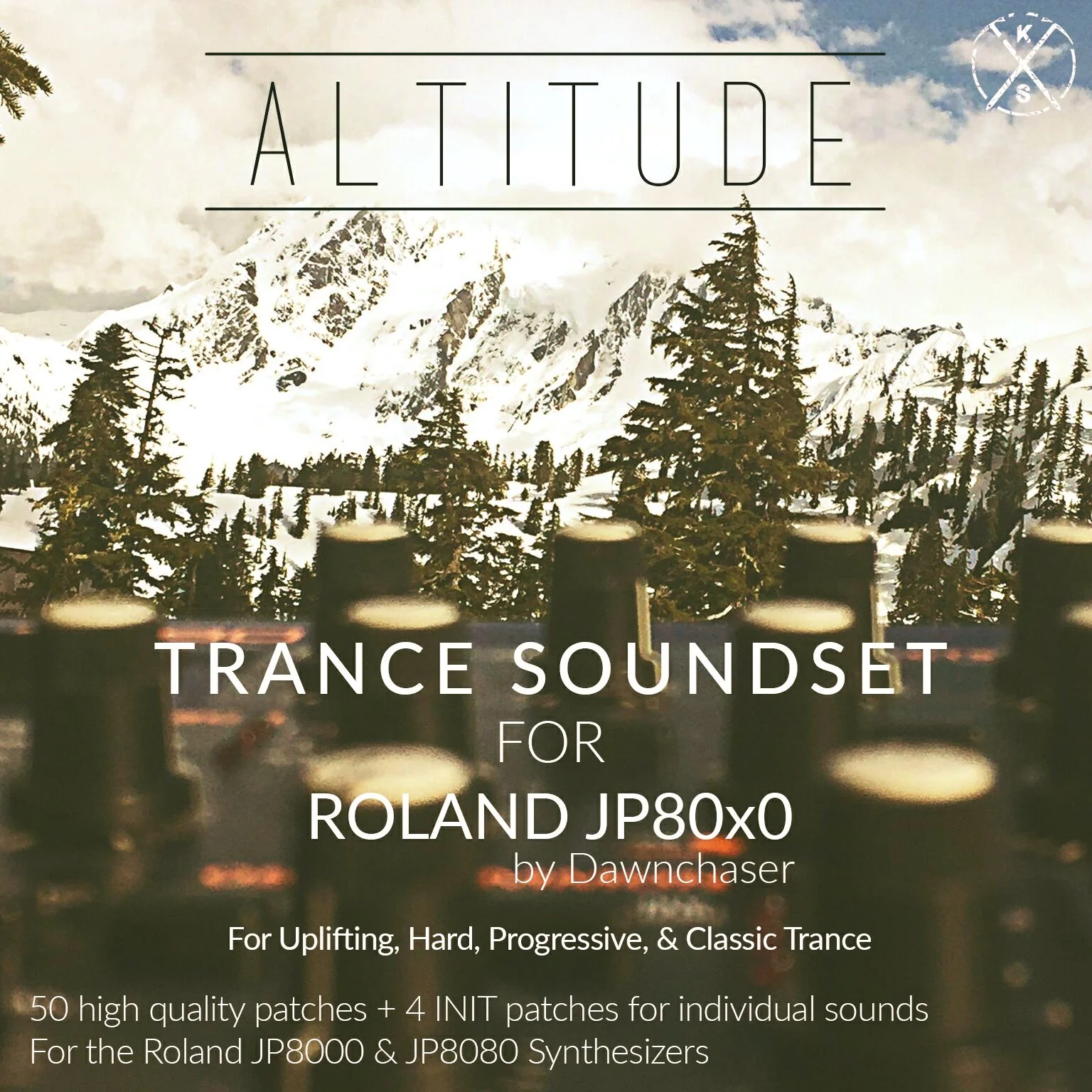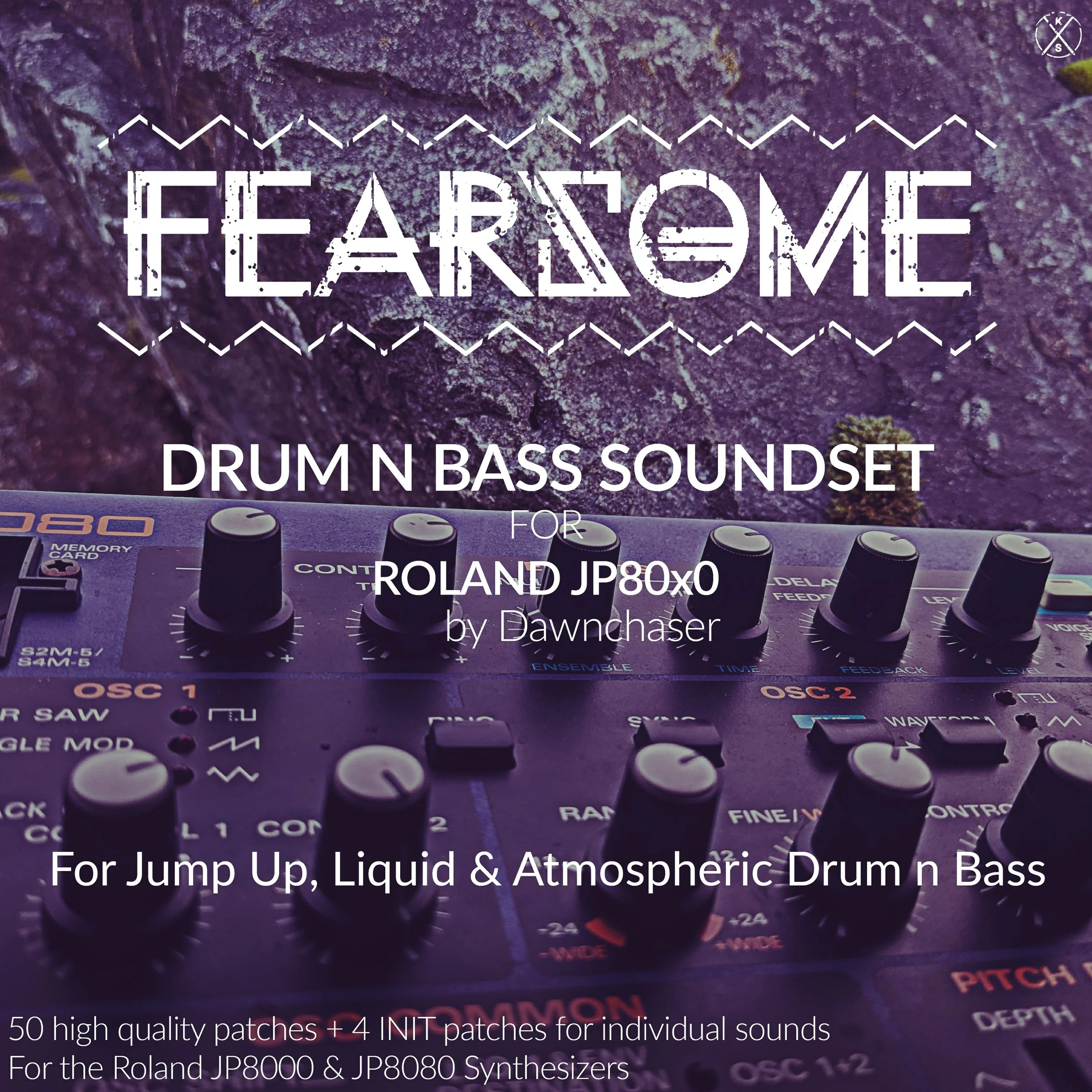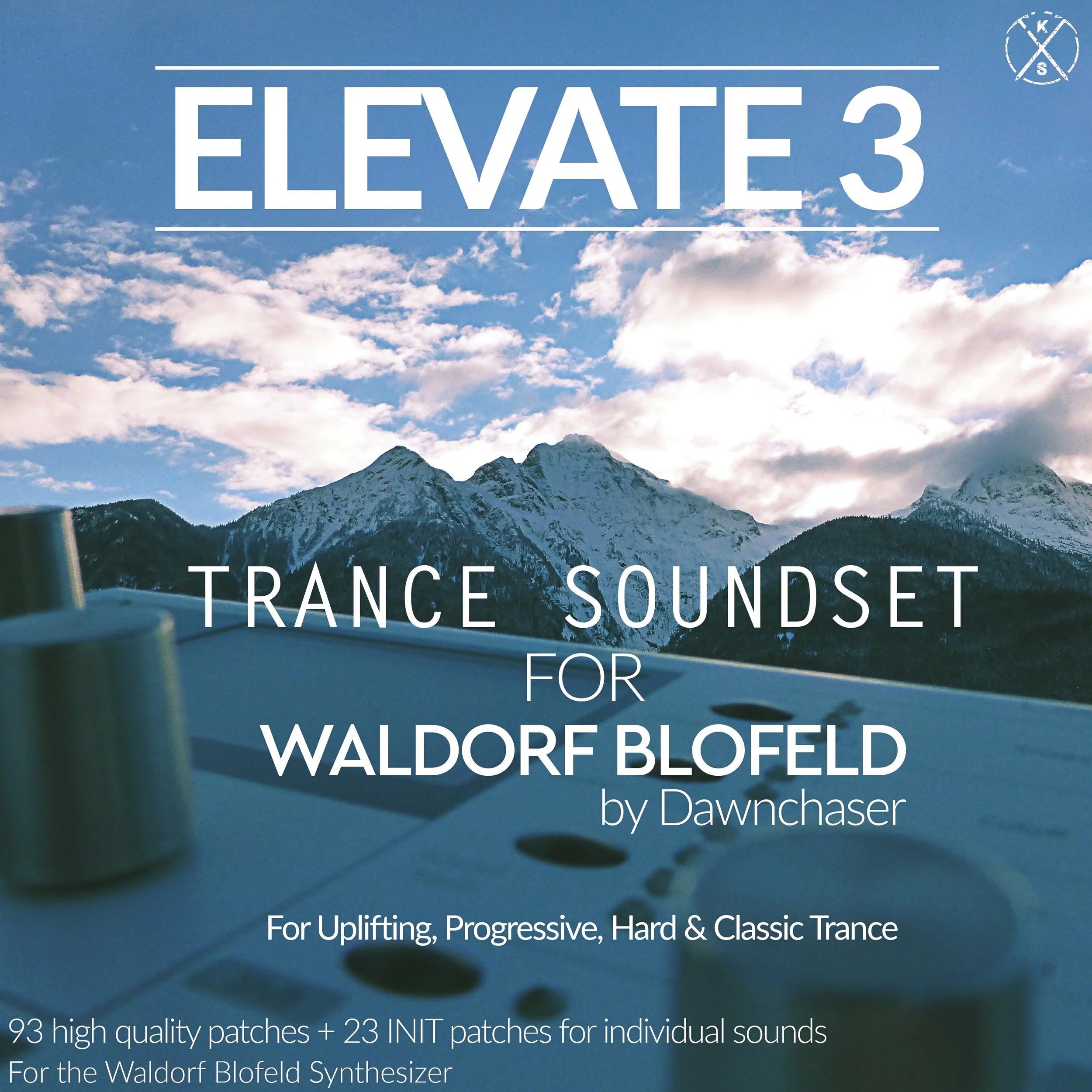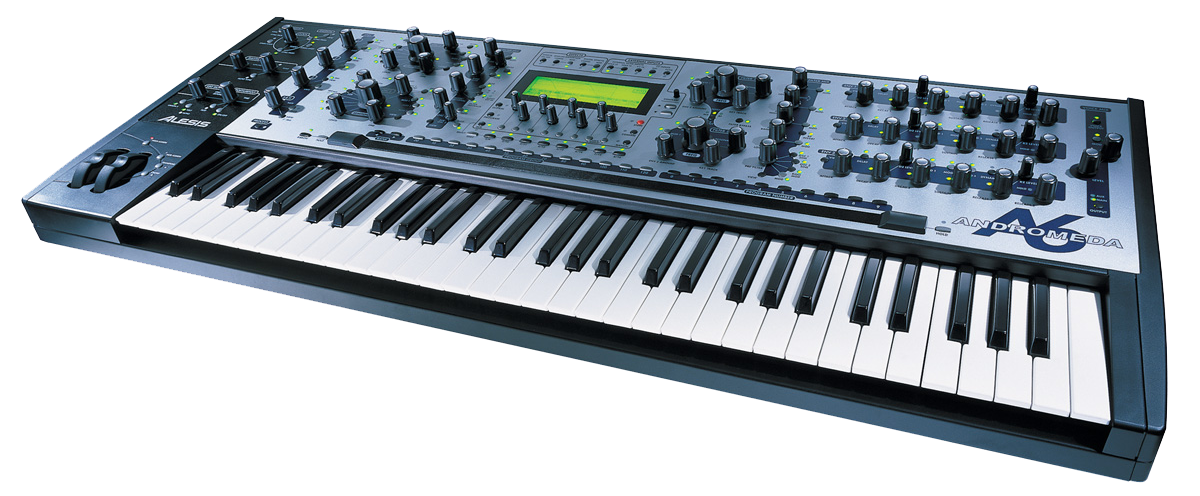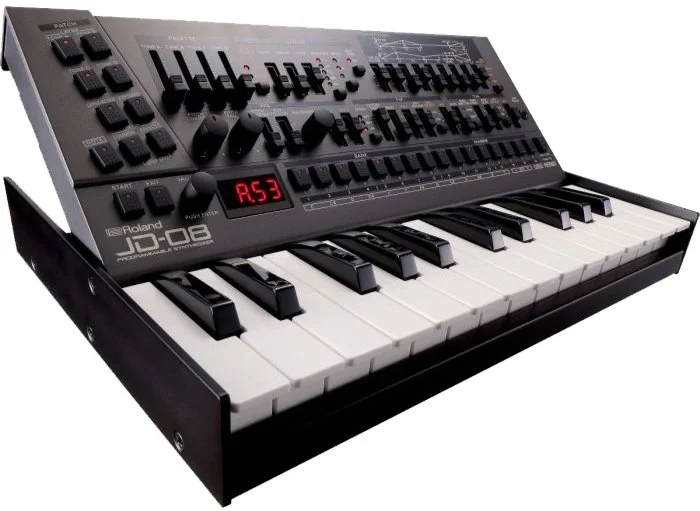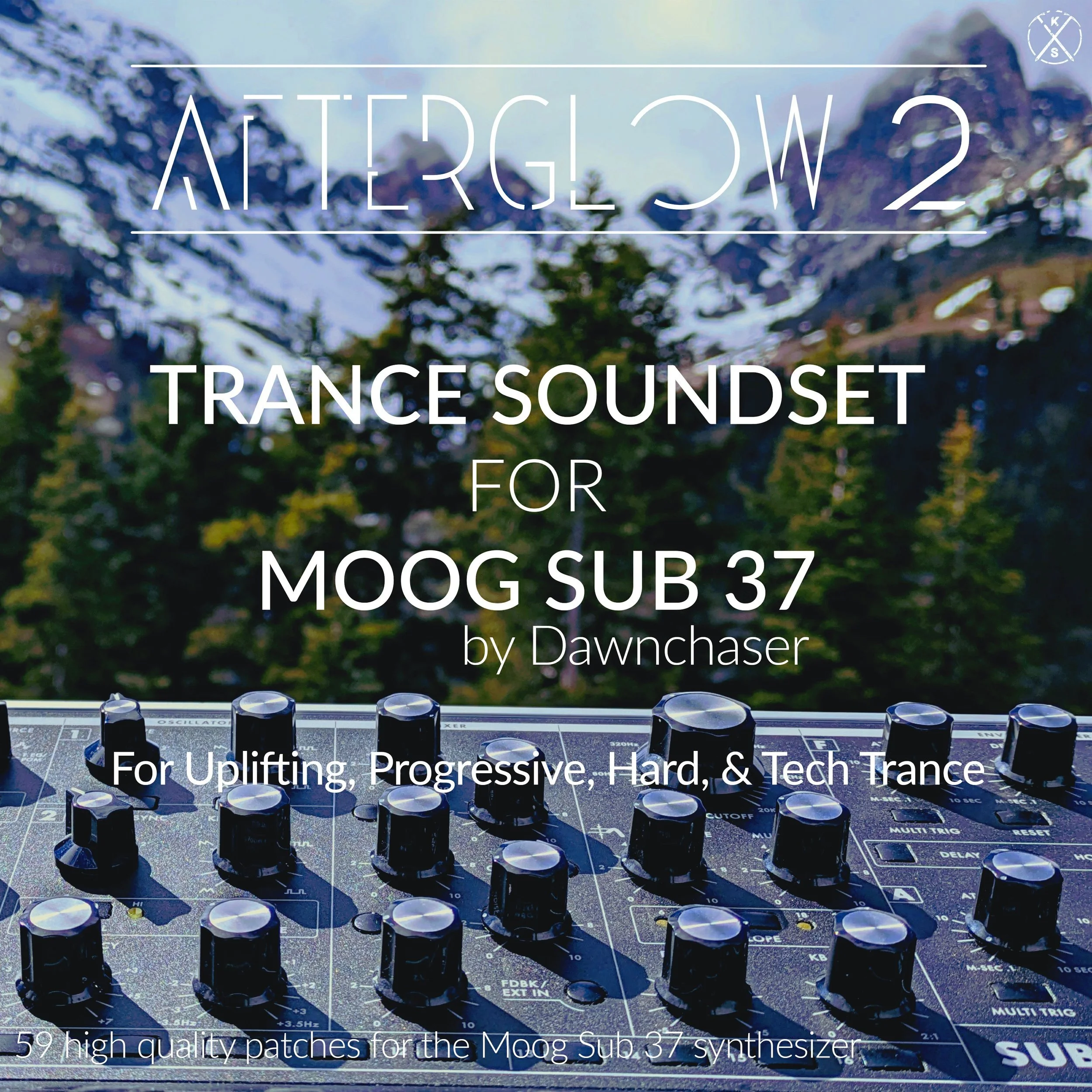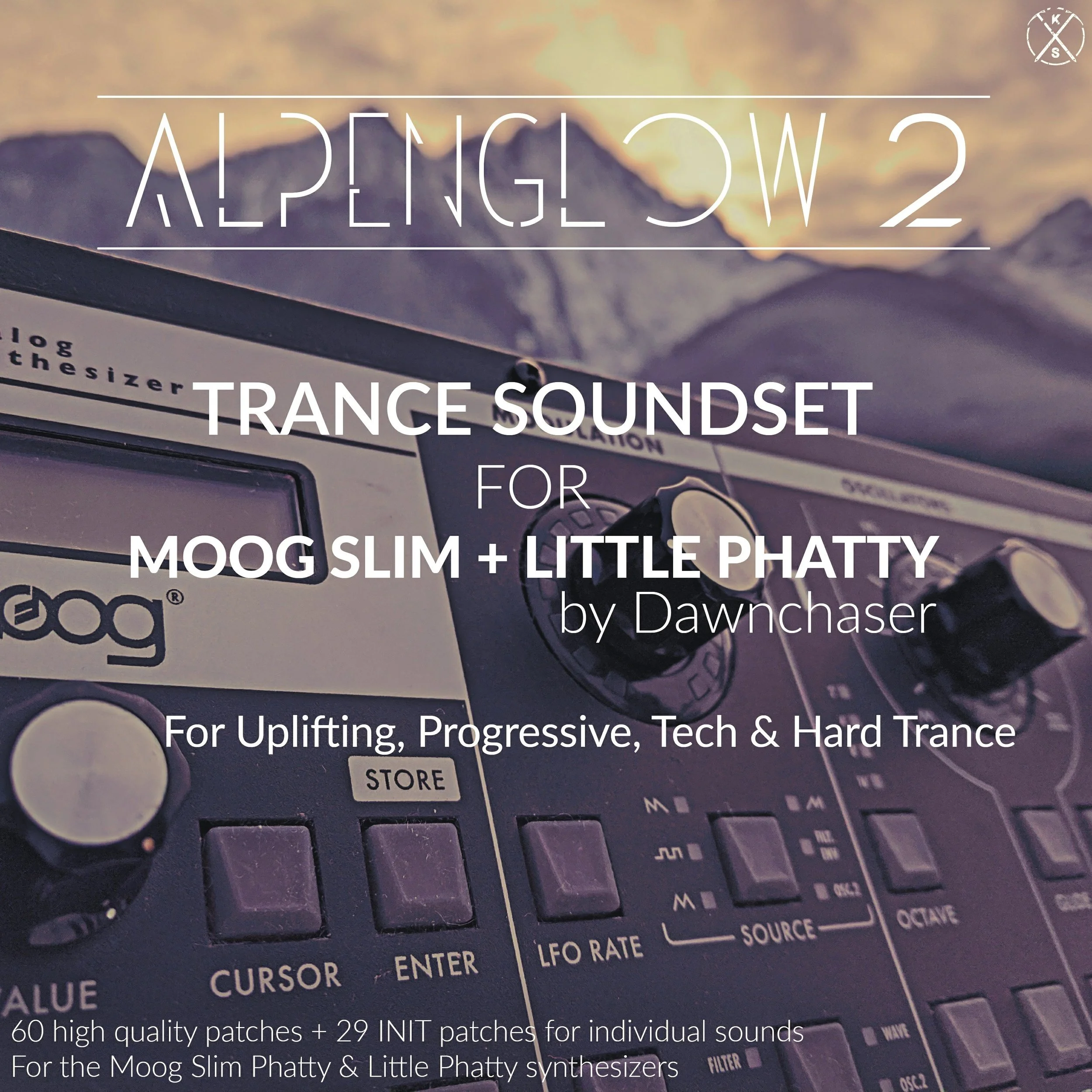Roland JP-8080 Review 2025
Digital. Plastic. Overused. Just A Trance Machine. Common comments made about the Roland JP-8080 (and its predecessor the JP-8000). Since its release in 1998, the JP-8080 has become a foundational staple in the Trance genre, and every music genre that has ever borrowed its big detuned SuperSaw sound since. Along the way it has earned a great deal of love… and hate. Ground-breaking for its time, and originally designed as a Virtual Analog successor to the legendary Jupiter-8, it saw use in nearly every big dance tune of the late 90s and early 2000s. But how does it hold up today? Is it still relevant and useful in 2025? Let’s dive in and have a look.
OSCILLATORS
Let’s be honest. This is almost certainly what brought you here. The original SuperSaw synth, its 7 asymmetrically-detuned Sawtooth waves run off a single oscillator with logarithmic-scale detuning enabled producers to create massive, lush leads and pads with 2 knob turns, and consequently create epic sounds that would propel Trance into the mainstream.
The SuperSaw, besides the aforementioned wave-stacking and detuning, also hid a hipass filter inside the oscillator, to eliminate low frequency mud from the saw waves. So out the gate, it sounds a touch thinner than the raw Sawtooth oscillator. It’s rough, it’s a little harsh, but with the right filter and Amp envelope settings, and a generous bit of reverb, it still sounds as big and epic as ever. Modern SuperSaws from Sylenth or Spire or Viper or Serum 2 may be able to reach even bigger levels of wave-stacking and polyphony, but the original still sounds spectacular, and with the right filter and EQ adjustments, will sound excellent in a modern tune.
All the other waveforms are fairly standard, and tend to be on the bright and sharp side. The Sawtooth in particular feels a little reminiscent of the JD-800 Saw, but as this is a VA synth with free-running oscillators, the sound is a bit rougher and more natural-sounding.
The Pulse wave has full sweep, and one of the knobs activates PWM, so classic analog strings can be had easily enough. Only real gripe is that you can’t switch the PWM source to anything except LFO 1, so no creating interesting modulated pulse plucks using the Filter Envelope as a source, like you can on Moogs or the Prophet Rev2, or the Blofeld.
The Feedback osc is quite interesting, as it is intended to mimic the sound of guitar feedback, for electric guitar noises. Combined with distortion and layered with other waveforms, this actually sounds very exciting, and is a fun addition.
Noise is also quite helpful, and you can sweep the frequency range and resonance, to dial in very precise flavors of Noise to add a little sizzle to your sounds (although honestly the oscillators on this synth are so bright it hardly seems necessary).
The Triangle wave can also be swept and modulated, and that yields a few interesting timbres. The Sync and Ring Mod functions baked into the Osc section are also cool, and are quite helpful for achieving bell tones and interesting gritty sounds.
FILTER
This is the other feature that really lends the JP a lot of its character. For a digital filter it can be steppy or smooth, but it has a distinctive feel that is hard to replicate elsewhere. The 12 dB slope tends to be my favorite, as the 24 dB is almost too steep, and even tiny Res amounts make sounds too rubbery and squeaky. Key Follow really works a treat on this filter though, and you can improve the clarity of arpeggios very nicely using it tactically in designing sounds for Trance or Techno.
ENVELOPES
Here’s where we get to the character of the synth that invites the second most controversy behind the SuperSaw. the infamous Clicky Envelopes of the JP. For those of you who don’t own one, the JP has a feature built in that if the Attack and Release sliders for both envelopes are set to 0, and you pull down the filter cutoff while playing notes, you will hear a distinct, loud, Click sound.
It leaps out and is super annoying in most contexts, and has been a source of annoyance for producers for decades.
The only way to eliminate it is to set the Attacks on the Filter & Amp envelopes to +3 or 4, and the Releases much higher than that.
For a long time, folks though it was some kind of bug. But it seems Roland intentionally designed the oscillators and envelopes to do that, in order to replicate the breathy clicky attack of a Hammond organ. To make synthesized sounds feel more like a vintage organ. Which is a pretty strange thing to do, when none of the JV or JD synths that came out right before it did that.
It’s an annoyance when you want to do really tight snappy plucks or punchy basses with zeroed out attacks and low cutoffs, because you can’t get rid of it, but for basically any other kind of sound where tight attacks and low cutoffs aren’t required, it’s a trivial matter to adjust the settings to avoid the issue.
LFO
The JP sports pretty typical LFOs for an analog-modeling synth from the 90s, so the usual suspects of the Triangle, Saw, Pulse, and S&H are there to choose from. Which for fairly simple vibratos and tremolos and PWM sounds (and some glitchy textures) are fine. What’s lacking in here are things like Reverse Saw, or Sine, or Filter Envelope as LFO sources, which is a shame. Doing modulated pulse plucks (as we are fond of) with a Filter as the source for the PWM is borderline impossible, except by using the Saw wave as a source, and it doesn’t allow for the same granularity of control as if a more static source could be used.
It would also have been nice if it were possible to modulate the Mix Depth or Detune of the SuperSaws, for added character. But as this synth shares more technical capabilities with our Sub37 than our Blofeld, we can’t really say too much.
Don’t expect super wild capabilities out of the LFOs for this synth, is what we’re saying.
MODULATION
Building on the remarks about the LFO, the Modulation capabilities of the JP are also pretty restricted. LFO 2 is technically permanently linked to the Modwheel, so unless you turn it up using a software interface, you won’t have much access to it for front-panel sound design.
Various parameters scattered around the synth are linked to the LFO, so you can modulate various oscillators, the filter, the panning, and the pitch and X-Mod setting, so there’s some fun to be had there.
The X-Mod is also interesting - it’s sort of like a rudimentary implementation of FM, and at the right octaves, and with a little distortion, can yield some cool screaming and growling tones to roughen up otherwise bland sounds.
EFFECTS
This is a section where there are big hits, and big misses. The big hits come in the form of the EQs, which can really make the sounds shine (sometimes too much), the Chorus, the Flanger, and the Distortion. The Distortion pushes into gnarly territory really quickly, so if you’re after gentle saturation, be very very light on it. The Chorus FX are nice and full of character, and you can hear it all over classic trance records.
Mind that your leads/pads don’t get lost in a modern mix when you use it, though. The Chorus does not play nice when summed to Mono.
The Delay is also quite nice on the JP. There’s no cutoff controls and only some deep menu diving to access the timed delay clock time settings, but it bounces around nicely and adds welcome movement and width to leads and plucks.
And the Flanger, Especially the Deep Flanger, is cool.
The misses however, are pretty big. The Phasers, the Jet Phase, the Freeze Phase, all borderline unusable. I don’t recall ever really hearing them on any tracks over the years either. The Feedback on them always seemed to be totally maxed out, so the Phasers except at the most minimal of settings, always had a painful ringing howling quality to them that made them unusable. If you’re desperate for a Phaser to use on your JP, route it into a Virus TI, and use the Phaser on 3 or 6 pole mode. The Virus Phaser is much easier to control and sounds much much nicer.
CONCLUSION
So having said all that, is the JP still a relevant synth today?
Before we answer that, let me add one final thought to this about a technical aspect that is incredibly valuable to remember:
With the JP, you don’t have one single synth to work with. If you run the synth in Performance mode (which is advised), and set it to Dual and get the MIDI channels for each set up correctly, you have 2 synths running at once, and if you adjust each layer for different octaves, or FX, or different kinds of sounds for each layer, or even duplicate a sound for each layer and then pan each one in opposite directions, you can achieve massive monumental sounds that will melt your brain and blow your mind.
We always work in Performance mode on our JP because being able to make really huge sounds that require minimal processing is always nicer than making a big heap of smaller-sounding patches that will require more layering/ processing to fill out a mix.
So having said that, is the JP worthit in 2025?
If you’re mostly focused on totally modern sounds that require a lot of complex modulations, this bit of vintage kit is probably not for you. While it can achieve modern sounds, vis a vis the new breeds of melodic techno and classic-inspired uplifting trance, it will always have a character more classic and oldschool in flavor. Which can be great for adding into a modern production for a little throwback flair. But that may not be for everyone.
Does it still sound great though? Absolutely. There are few sounds more satisfying than a real JP SuperSaw in a classic-styled epic trance tune, or a melodic techno tune channeling some oldschool vibes. We’ll be using ours until it burns out and gives up, someday in the distant future.
If you can find one for a good price, get one, and have fun. But if you’re after something more versatile and flexible, you may want to investigate the Blofeld or Mininova instead.
Dawnchaser is a Pacific Northwest-based electronic music producer, mountaineer, documenter of all things adventure, mountain, and travel-related, and manager of Kulshan Recordings. If he’s not in the studio writing music about adventures, he’s out on one.








